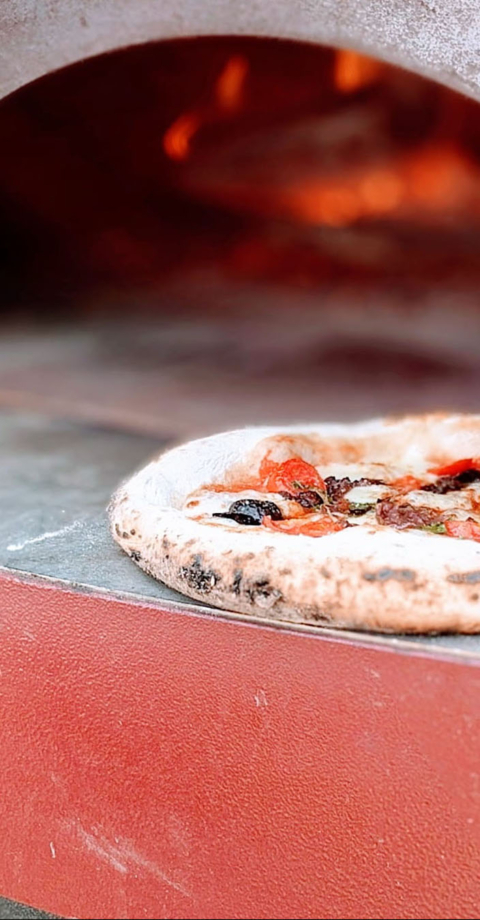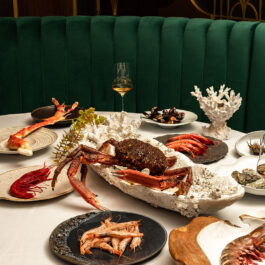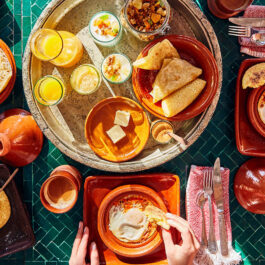When your home turns into an oven, the last thing you want to do is heat up the one in your kitchen – so turn to the outdoor oven instead.
An oven, by definition, requires a controlled heat source and a compartment for cooking food in. Humans have been using ovens in food preparation for tens of thousands of years, well before they began writing and recording history, and even before they began farming – meaning that ovens, particularly of the outdoor sort, have accompanied humans throughout the ages and across the world as they went about the work of building civilisations. It’s no surprise, then, that outdoor ovens in various shapes and forms feature in many global culinary traditions today.
Here, we take a look at some of the different types of outdoor ovens you can find around the world, along with the benefits of using each and even tips for how to build them yourself.
Earth Ovens
The most basic and ancient type of outdoor oven, the earth oven is simply a pit in the ground made to trap heat. It’s been around for millennia, and is still in use today in communities across the globe. It all starts with digging a hole in the ground, lighting a fire in it, and leaving it to burn down to a smoulder. Then, a layer of vegetation is placed on top, followed by the food. After being covered by another layer of leaves, it’s topped with a blanket of soil to trap the heat and steam. In this experimental archaeology video, archaeologist Mara Kaktins demonstrates how this is done.
In Hawaii, the earth oven is called an imu, and the act of cooking in one – as well as the dishes coming from the imu – is referred to as kālua; it’s essentially a cooking and steaming technique involving porous rocks that are heated on coals. The rocks are spread out over a hole in the ground, then a layer of vegetation (such as banana leaves) and the food (such as a pig or turkey) is placed above, topped by more vegetation and a layer of soil. The steam generated by the leaves cooks the meat evenly but slowly – it will take many hours, sometimes even a full day, to be done, resulting in tender, smoky meat that falls off the bone. The Samoan umu is closely related to the Hawaiian earth oven, but more elevated above the ground.
The Mexican barbacoa follows a similar practice. The name is Taino (an Indian language which used to be spoken throughout the Caribbean) and refers to the oven pit itself, lined with agave (maguey) leaves to facilitate the slow-roasting of meat.
Earthen Ovens
Not to be confused with the earth oven, the earthen oven is a primitive mud or clay oven used before the introduction of cast-iron stoves. They look pretty much the same the world over, with minor variations in size or materials.
Take hornos for example, traditional ovens made from adobe (a type of ‘mudbrick’) and used by the Pueblo people of the southwestern US. The ovens came to the North American continent by way of the Iberian Peninsula, where they were introduced by the Moors.
Today, hornos are still used in New Mexico and Arizona. They are made into a beehive shape from a thick layer of adobe, which absorbs the heat when a wood fire is built inside. After a couple of hours, the embers and ashes are removed and bread can begin baking. For cooking corn, the embers are splashed with water so the corn gets ‘steamed’. Meats are cooked in it, too, in which case the oven is fired up, then the coals are moved to one side, and the door and smoke hole get sealed with mud.
Since clay or cob (the British name for adobe) are cheap, sustainable materials, and because these ovens are relatively easy to make yourself, the internet is teeming with DIY tutorials for creating your own earthen oven.
The oven above is built with a mould made out of ash saplings. Bent into a dome shape, they burn away in the first fire. Some cob ovens use a mould of sand, which can be removed through the oven door once the cob has dried. A little less environmentally friendly, but quite durable, is a dome made of refractory cement or pumice concrete. The following video uses a gym ball as a mould.
Brick Ovens
The ‘horizontal-plane masonry oven’ is better known by its street name: the brick oven. Often referred to nowadays as pizza ovens, historically they were used for all sorts of baking jobs. Originating in ancient Egypt, the masonry oven has played an important role in civilisations throughout the millennia, serving as a spot to gather and socialise during the preparation of food.
Want to make your own? Check out this tutorial video:
Tandoor Ovens
Somewhere between an earthen oven and masonry oven, a tandır or tandoor is a cylindrically shaped clay oven. Evidence of tandoor ovens has been found as early as 4,000 BC, having been used across the Middle East and Indian Subcontinent from Turkey to Bangladesh. The word is derived from the Akkadian tinuru, which becomes tannour in Hebrew and Arabic, and tandır in Turkish.
Tandoors nowadays are best known for their use in Indian and Pakistani cuisines, with tandoori dishes deriving their name from them. This type of oven was originally devised to bake bread in, but its intense heat, combined with moist-retaining properties, makes it perfect for cooking extremely succulent meat or fish as well.
The heat source – traditionally coal or wood on the bottom of the tandoor – emanates a high direct heat (up to 480°C or 900°F), perfect for grilling meat and fish, while the hot clay walls are ideal for bread-baking. The radiant heat inside functions similar to a convection oven. Smoke resulting from juices and grease dripping onto the coals is what lends the characteristic smoky tandoor flavour to food.
In Georgia, the oven is called tonir, and is usually around 1 metre wide and 1.5 metres deep. Bread dough (shoti) is stretched and placed on the walls of the oven. When it’s done, they are removed with a long hook, or, as the experienced baker in this video demonstrates, by diving head-first into the oven (!).
In Uzbekistan, this form of oven is called a tandir and is used to make fluffy obi-non bread. The clay walls of the tandir are sprinkled with water to help the bread cook and be easily peeled from the walls.
Want to make your own tandoor? This video shows you how to build one out of a galvanised metal bin and terracotta pots.
Interested in something a bit more permanent? Try this tandır, a clay construction dug into the garden soil.














Sorry, the comment form is closed at this time.